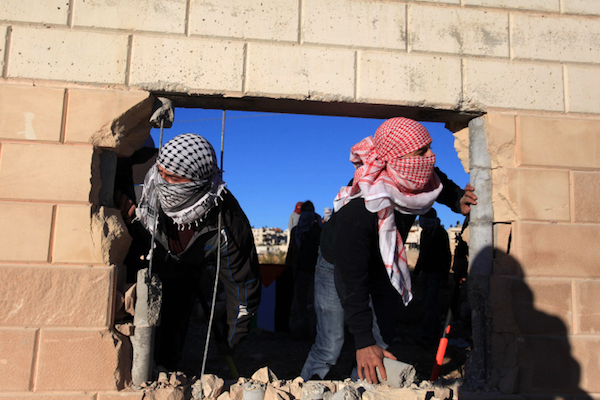A proposed law to ‘annex’ dozens of settlements to Jerusalem is just one step toward normalizing a reality that has been in the making for decades.

There is not a single Israeli politician today calling for the wholesale annexation of the West Bank. The number of politicians working to advance piecemeal annexation, however, is growing by the day.
Take the proposed Greater Jerusalem law, making its way through Israel’s parliament at the moment. The bill, which would extend Jerusalem’s municipal umbrella over dozens of West Bank settlements along with well over 100,000 settlers, wouldn’t really annex the settlements to Jerusalem. In a way, it actually does the reverse: it annexes Jerusalem to the settlements.
While the new “residents” would be given a right to vote in Jerusalem municipal elections in order to achieve an astounding feat of gerrymandering, their existing settlement municipalities will actually remain intact — subject to Israeli military law, as opposed to Israeli civilian law that applies to Jerusalem and the illegally annexed eastern half of the city.
In other words, the drafters of this law were careful to ensure that it doesn’t qualify as either formal or de facto annexation, irrespective of what it reality looks like on the ground.
And that’s the point.
The proponents of annexation within the Israeli establishment understand perfectly well that the world isn’t ready to accept the formal annexation of the West Bank right now.
“This is a process,” annexation proponent and senior minister in the Israeli government Naftali Bennett explained at the Brookings Institute a few years ago. “I’m not suggesting that, you know, one day in midday we just [annex]. There’s a process of changing the global view of what’s going on here and it has to start with that… And it takes time. It’s an uphill battle.”
That’s exactly what the Jerusalem bill is meant to accomplish: to normalize the idea of annexation — the idea that Israel can unilaterally redraw boundaries to include and exclude certain population groups (Jewish and Arab, respectively), and claim as its own whatever territory it pleases.
Of course, that’s what the situation looks like today.
The facts on the ground were set a long, long time ago. Israeli governments representing both sides of the political map have for decades declared that those same settlements mentioned in the Greater Jerusalem bill, so-called “consensus” settlements and blocs, are off the table in any peace negotiations.
What is happening now is changing the perception — internationally and in Israel — that these settlements are not a part of Israel proper. Drawing them into Jerusalem’s municipal boundaries is an important step in that long game. In fact, perhaps the most serious consequence of the Greater Jerusalem bill has nothing to do with the law itself: its greatest accomplishment will be to make whatever comes next seem less dramatic.
That is what people mean when they talk about “creeping annexation”: when the drive toward annexation happens so slowly and incrementally, in a way that that no single step appears all that significant, it’s incredibly difficult to remember where we started and how far we’ve come.
It is crucial, therefore, to step back and do just that — take stock of where we are today.
Israel has been the only acting sovereign between the river and the sea for more than 50 years now. Annexation, de facto or de jure, creeping or sweeping, is the inevitable trajectory of the policies and ideology that have come to define both sides of the political map in Israel today. For nearly a decade Israel has had a prime minister who repeatedly vows to never withdraw its troops and settlements from the West Bank, and now the leader of the only viable opposition party is pledging the same.
That we are living in a one-state reality — and have been for a long time — should no longer be a theoretical question, irrespective of what we call it. The question that really matters is where things go from here.

